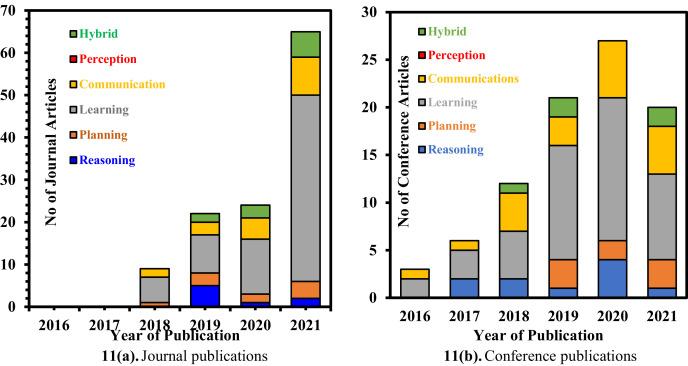As artificial intelligence moves from research labs into defense systems, supply chains, and election infrastructures, cybersecurity has become the new terrain of great-power competition. From state-backed intrusions on critical services to tightening controls on advanced chips and cloud compute, governments and tech giants are redrawing the boundaries of influence not with troops or tariffs, but with code, data, and the capacity to secure them.
AI is changing the speed and scale of both attack and defense: automated exploitation, deepfake-driven information warfare, and AI-assisted malware meet threat hunting, anomaly detection, and autonomous incident response. The result is a shifting deterrence calculus in which resilience, talent, and access to computing power matter as much as missiles or markets. Alliances are being tested and reconstituted around shared standards, threat intelligence, and export regimes, while a fragmented regulatory map raises the prospect of a “splinternet” of models and security norms.
This article examines how AI and cybersecurity are reshaping global power dynamics-who is gaining leverage, how critical infrastructure and private platforms have become strategic assets, and what to watch in the next phase of the contest, from quantum-era risks to the geopolitics of cloud and chips.
Table of Contents
- Great Power Competition Shifts to the Algorithmic Battlefield as Attacks on Grids and Satellites Escalate
- Data Sovereignty and Secure Compute Decide Intelligence Advantage: Invest in domestic chip capacity, standardized red team audits, and multifactor authentication across critical sectors
- Allies Move From Information Sharing to Joint Action: Build real time threat intelligence pipelines, set escalation red lines, and coordinate export controls and cyber sanctions
- To Conclude
Great Power Competition Shifts to the Algorithmic Battlefield as Attacks on Grids and Satellites Escalate
Security agencies and industry operators report that rival states are investing in machine-speed intrusion, attribution evasion, and precision disruption, pairing AI-enabled malware with deep reconnaissance of industrial systems to probe power grids and orbiting satellites; in parallel, defenders race to deploy autonomous detection and response stacks that fuse telemetry from substations, ground stations, and cloud backbones, a contest increasingly measured in milliseconds and model quality rather than headcount.
- Tactics: Large models prioritize zero-day discovery, automate lateral movement, and generate polymorphic payloads tuned to operational technology.
- Targets: High-voltage relays, satellite command links, and timing services whose disruption cascades across finance, logistics, and emergency networks.
- Defenses: Model-driven anomaly detection at the edge, sandboxed firmware updates, and red-teaming with synthetic traffic to harden protocols.
- Escalation Risks: Ambiguous attribution and dual-use tools raise the likelihood of miscalculation, challenging existing deterrence frameworks.
- Market Impact: Procurement pivots to AI-first security stacks, sovereign cloud mandates, and resilient space architectures to shore up supply chains.
Data Sovereignty and Secure Compute Decide Intelligence Advantage: Invest in domestic chip capacity, standardized red team audits, and multifactor authentication across critical sectors
As governments race to harden digital infrastructure and outpace rivals in algorithmic capabilities, control of datasets and compute is becoming the pivotal lever of state power; authorities are pushing localization mandates, funding trusted fabrication, and demanding rigorous assurance of AI systems, while security agencies warn that dependence on offshore semiconductors and opaque model supply chains creates exploitable chokepoints amid rising credential-theft and deepfake-enabled intrusions across energy, finance, and healthcare networks.
- Domestic chip capacity: targeted subsidies for advanced nodes and secure packaging, firmware integrity requirements, and hardware root-of-trust with HSM-backed key custody.
- Standardized red team audits: interoperable adversarial test suites, continuous evaluation pipelines, shared incident taxonomies, and transparency on model/data lineage across vendors.
- Multifactor authentication: phishing-resistant FIDO2 for critical roles, step-up verification for privileged workflows, and enforced just-in-time access with rapid revocation.
- Data sovereignty: regional processing and residency controls, confidential computing enclaves for sensitive workloads, and export regimes calibrated to curb espionage without stifling research.
- Secure compute: attested hardware, memory encryption at scale, and zero-trust segmentation across training clusters and edge inference nodes to contain blast radius.
Allies Move From Information Sharing to Joint Action: Build real time threat intelligence pipelines, set escalation red lines, and coordinate export controls and cyber sanctions
In a shift from diplomatic rhetoric to operational alignment, transatlantic partners are standing up shared, always-on cyber infrastructure that turns alerts into coordinated response-wiring national SOCs together, codifying escalation thresholds, and synchronizing the levers of trade and finance to blunt hostile AI-enabled intrusions and supply‑chain compromise.
- Real-time threat pipelines: Federated sensors feed STIX/TAXII 2.1 streams and streaming APIs into cross-border fusion centers with zero-trust links and hardware-backed enclaves.
- Common playbooks: Joint kill-chain mapping, machine-readable indicators, and pre-authorized takedown requests enable minutes-level containment across jurisdictions.
- Escalation red lines: Public thresholds for critical infrastructure hits, model theft, or coercive disinformation trigger graduated responses from joint attribution to countermeasures.
- Coordinated sanctions: Harmonized cyber designations, synchronized export controls on advanced AI chips and cloud compute, and penalties on laundering conduits tighten the pressure window.
- Due process and auditability: Independent oversight, tamper-evident logs, and privacy-preserving analytics protect civil liberties while maintaining evidentiary rigor.
- Industry integration: Cloud providers and semiconductor firms receive near-real-time advisories and safe-harbor guidance to implement blocks without fragmenting markets.
To Conclude
As algorithms, supply chains and zero‑day exploits move closer to the center of statecraft, hard power is being recalibrated alongside soft rules. Alliances are rewriting defense playbooks with joint cyber units and AI sharing agreements; markets are pricing geopolitical risk into chips, clouds and cables; and smaller states are hedging between competing tech spheres even as private firms become critical infrastructure by default.
What comes next hinges less on any single breakthrough than on governance: who sets standards, who controls compute and data, how transparent major incidents become, and whether norms can keep pace with escalating tools. For now, governments and companies are moving faster than treaties. The next election cycle, crisis simulation or critical‑infrastructure outage will test whether deterrence, resilience and restraint can coexist in an era where power is increasingly measured not just by what a nation can project, but by what it can protect.


